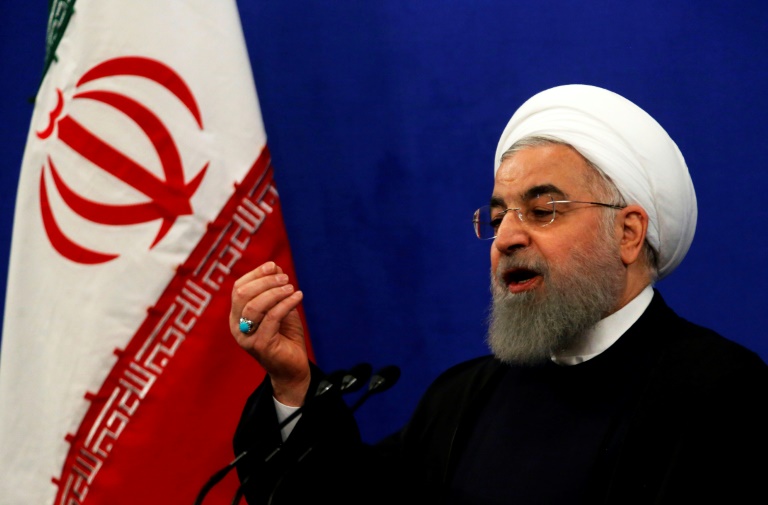 |
1988 Massacre of Political Prisoners in Iran |
Iran Enjoys Impunity as World Ignores Past Crimes Against Humanity
by Hamid Enayat ـNovember 4, 2019
For more than 30 years, the international community has been largely ignoring arguably one of the 20th century’s worst crimes against humanity. In so doing, it has helped reinforce a pervasive sense of impunity within the government responsible. It is time to hold perpetrators accountable.
In the summer of 1988, approximately 30,000 political prisoners were systematically executed across the Islamic Republic of Iran. Death sentences were handed down after “trials” that lasted as little as one minute and were designed simply to identify any persistent opposition to the theocratic system after Iran’s eight-year war with Iraq.
As confirmed by an audio recording that was leaked to the public in 2016, victims of the massacre included children and pregnant women. The creator of that recording, Hussein-Ali Montazeri, had been the second-highest authority in Tehran before he confronted his colleagues over the “worst crime of the Islamic Republic.” He was swiftly punished for his conscience by being ousted from the government and spent the last years of his life under house arrest.
Khomeini’s Fatwa
Montazeri’s fate stands in stark contrast to that of the people who played active roles in carrying out the killings. Among them are both the current and former Ministers of Justice under President Hassan Rouhani, as well as Rouhani’s challenger in the 2017 presidential election, who was subsequently appointed to head the Iranian judiciary.
Each of these men had a place on the “death commissions” that were established in various cities in response to a fatwa (religious decree) from Ayatollah Khomeini, which read in part: “Whoever at any stage continues to belong to the Monafeqin must be executed. Annihilate the enemies of Islam immediately.”
“Monafeqin” is still used by regime officials as a derogatory term for the People’s Mujahedin Organization of Iran (PMOI/MEK), an exiled Iranian political-militant organization. Although the PMOI comprised the overwhelming majority of the victims of the 1988 massacre, the regime failed to destroy the organization, which has steadily grown while leading an activist coalition known as the National Council of Resistance of Iran (NCRI).
Attention for 1988 Massacre
The PMOI and NCRI have worked tirelessly to bring international attention to the massacre, with varying degrees of success. Human rights groups like Amnesty International have long recognized the seriousness of the regime’s crime, and have repeatedly joined in calling for action by Western governments and the international community. But policymakers have been much warier of speaking publicly about the worst aspects of Tehran’s human rights record. Little has been done to hold the regime accountable, even as more and more information has come to light.
The 30th anniversary of the massacre of 30,000 political prisoners in #Iran, the red roses of freedom, is a day of taking pride for every freedom-loving Iranian and every Iranian protester who has opted to topple the mullahs’ religious dictatorship. #1988Massacre
463 people are talking about this
In a speech given last July, NCRI President Maryam Rajavi explained that the international conspiracy of silence stretches back to when the massacre was still ongoing. “The Iranian Resistance actively engaged in the exposure of the 1988 massacre on the international level since the very first weeks, urging reaction by the world and especially western governments,” she said. “However, they maintained their silence because they had just initiated their policy of appeasement.”
Rajavi was referring to a tendency among Western politicians to convince themselves that the Iranian regime is capable of internal reform. To encourage this outcome without taking serious actions of their own, European and American lawmakers have routinely reached out to so-called moderate Iranian officials, in hopes of promoting the political careers of those who supposedly represent the lesser of two evils.
Rouhani’s False Promises
Today, the standard-bearer for that “moderate” faction is President Rouhani. Predictably, though, his election in 2013 did not set off the hoped-for wave of reform. This is evident from the growing belligerence of Tehran’s foreign policy, as well as the recurring crackdowns on protests, public activism, and perceived sympathy with Western lifestyles and groups.
However, the false promise of the Rouhani administration should have been obvious to Western observers from the very start, when the newly-elected president insulted the memory of murdered political prisoners by appointing one of the most outspoken perpetrators of the massacre as Justice Minister.

Under the leadership of “moderates” and “hardliners,” and at times of isolation and times of engagement, the Islamic Republic has consistently rewarded its worst human rights abusers while shamelessly defending their crimes. In a 2018 report, which detailed the massacre and its legacy, Amnesty International noted that since 2016, the Iranian authorities have “issued numerous statements glorifying the perpetrators of the mass killings as ‘national heroes,’ likening any criticism of the atrocities to support for ‘terrorism,’ and threatening reprisals against anyone seeking to shed light on the mass prisoner killings.”
The regime’s narrative is plainly absurd, but its spread is made possible by the international community’s silence. Anyone who wishes to challenge the obscene misrepresentation of crimes against humanity should push for the United Nations to investigate the 1988 massacre. At the end of that investigation, those who are found responsible must face charges in international courts.














No comments:
Post a Comment